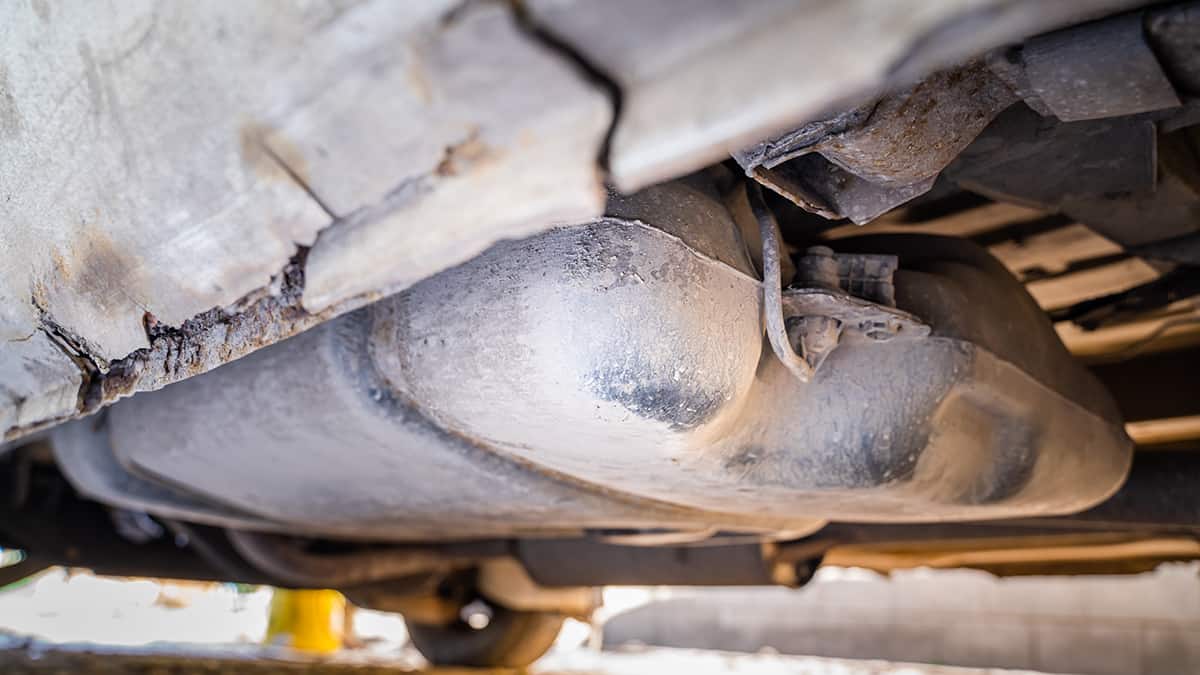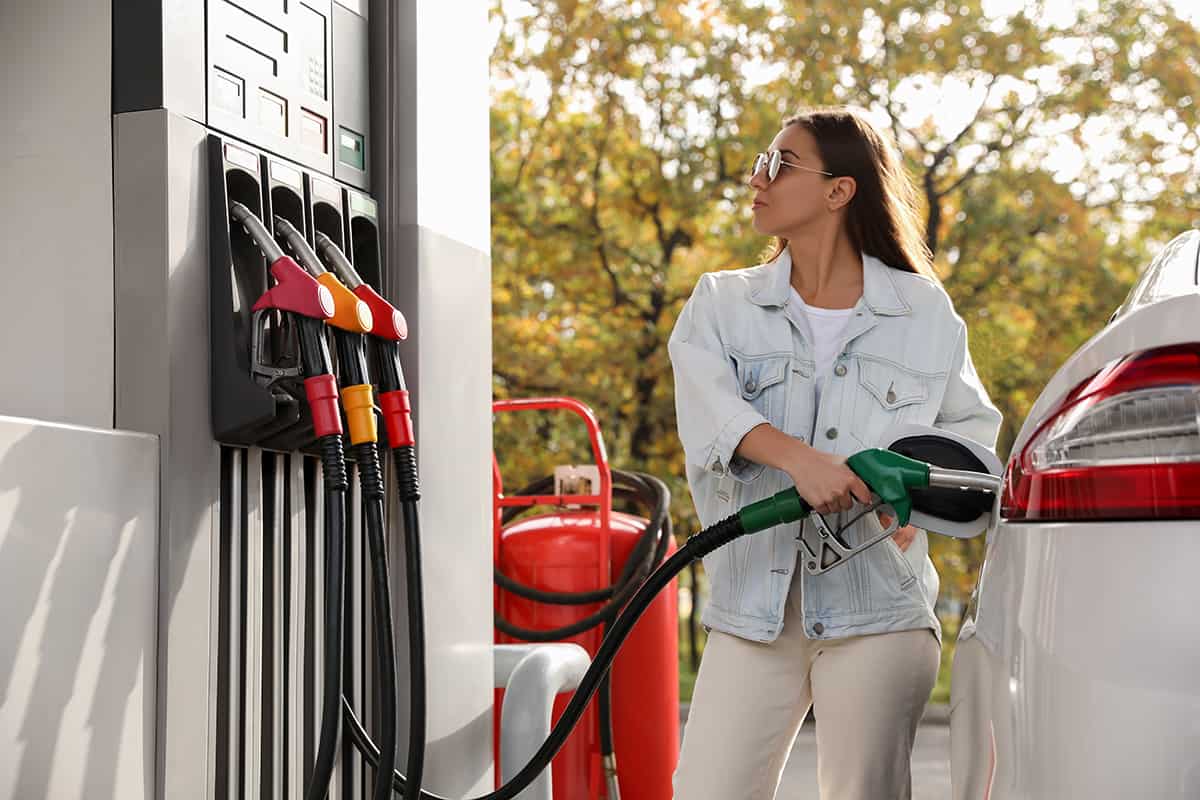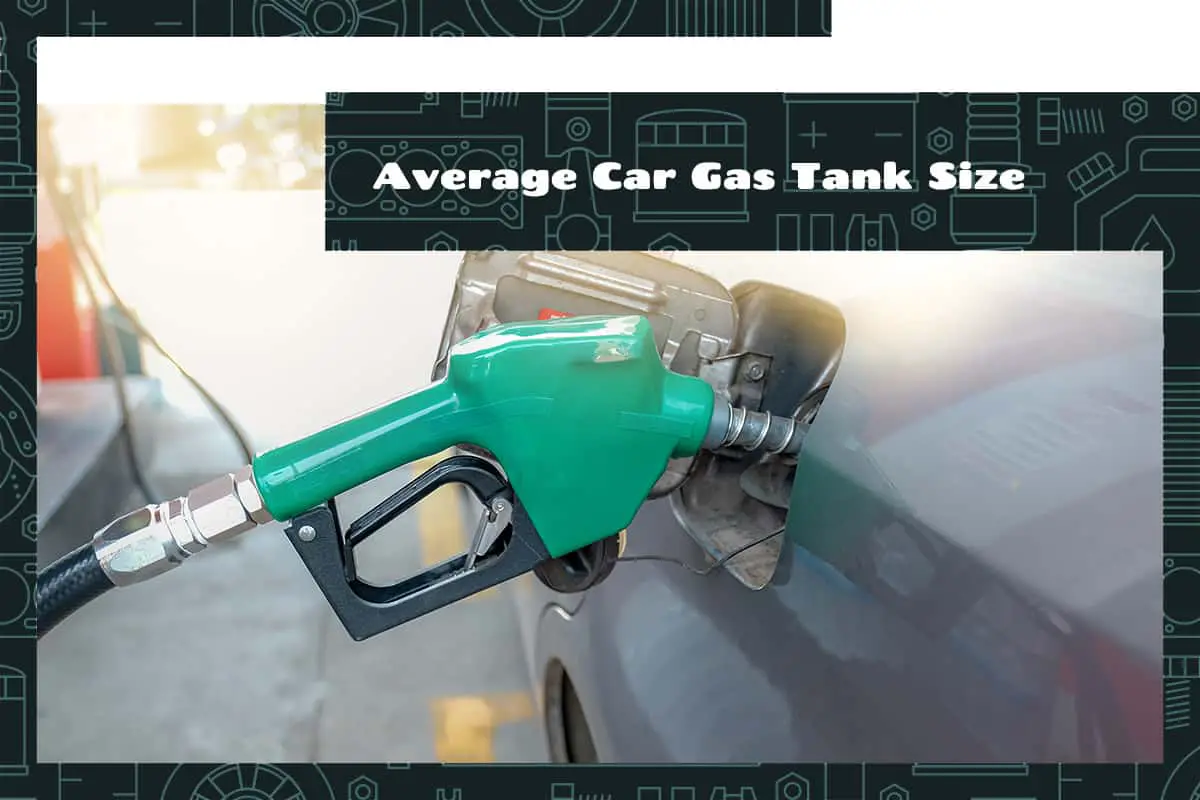The size of a car’s gas tank is more than just a trivial detail. You should know how much fuel you can fill in your car’s tank for planning long trips and managing fuel costs. So, how much gas can the typical car hold?
The average car gas tank size typically ranges from:
- Compact Cars: 12-15 gallons
- Sedans and Mid-Size Cars: 14-18 gallons
- SUVs and Trucks: 18-25 gallons
In this guide, we will take a look at the various factors that influence gas tank sizes, learn the average gas tank size in different car types, and examine how it affects driving.
Gas Tank Basics

The gas tank, also known as the fuel tank, acts as the storage vessel for the fuel that powers the engine. Generally found in the rear or middle of the vehicle’s undercarriage, the gas tank’s location is strategically chosen to optimize weight distribution and safety.
Its primary function is to store and supply gasoline to the engine via the fuel pump and fuel lines, ensuring a constant supply for smooth running. Tanks are designed with several safety features, such as venting systems to allow fumes to escape and barriers to reduce the risk of leakage or explosion in a collision.
Gas Tank Materials and Shapes
Gas tank materials and shapes have evolved over time to enhance fuel storage efficiency and safety. Here’s what you need to know:
- Materials: Most tanks are made from high-density polyethylene (HDPE), steel, or aluminum. HDPE is lightweight and resists corrosion, while steel and aluminum provide robust strength.
- Shapes: Tanks are designed in various shapes to fit the vehicle’s undercarriage without hindering performance. Whether cylindrical, rectangular, or custom-shaped, the design aims to optimize space and safety.
Why Does the Gas Tank Size Matter?
The size of the gas tank affects several aspects of a vehicle’s performance and user experience:
- Driving Range: A larger tank means longer distances between refueling, vital for long trips or areas with fewer gas stations.
- Fuel Costs: Managing gas tank sizes may lead to better budgeting for fuel expenditures, as a full tank cost varies depending on the size.
- Vehicle Weight: The tank’s size contributes to the car’s overall weight, which affects fuel efficiency and handling.
Gas Tank Sizes by Car Type
The size of a vehicle’s gas tank is not a one-size-fits-all feature. Different car types have varying requirements, which translate to different gas tank sizes.
Compact Cars
Compact cars, known for their fuel efficiency and urban practicality, typically have smaller gas tank sizes. Here’s what to expect:
- Average Tank Size: 12-15 gallons.
- Fuel Efficiency: Often reaching 30-40 miles per gallon (mpg), making them economical choices.
- Impact on Design: The smaller tank complements the compact size, leaving more room for passengers and cargo.
Sedans and Mid-Size Cars
Sedans and mid-size cars are common family vehicles, offering a balance between size and efficiency.
- Average Tank Size: 14-18 gallons.
- Fuel Efficiency: Generally achieving 20-30 mpg, depending on engine size and type.
- Variety of Options: The broad category includes everything from sporty coupes to luxurious saloons, each with slightly different gas tank sizes.
SUVs and Crossovers
SUVs and crossovers are favored for their spacious interiors and off-road capabilities, and their gas tanks reflect these needs.
- Average Tank Size: 18-25 gallons.
- Fuel Efficiency: Usually ranging from 15-25 mpg, depending on the specific model and engine.
- Design Considerations: The larger tank size accommodates the vehicle’s greater weight and often lower fuel efficiency.
Trucks and Vans
Trucks and vans are designed for utility and heavy-duty purposes, necessitating larger gas tanks.
- Average Tank Size: 25-36 gallons.
- Fuel Efficiency: Typically 10-20 mpg, influenced by the vehicle’s size, weight, and usage.
- Usage and Variability: Gas tank size can vary widely, depending on whether the vehicle is used for hauling, towing, or passenger transport.
Electric and Hybrid Vehicles
The rise of electric and hybrid vehicles introduces a new dimension to fuel storage, as these vehicles may rely on both traditional fuel and electric batteries.
- Hybrid Average Tank Size: Often around 12-17 gallons.
- Electric Vehicle Considerations: While purely electric vehicles don’t have traditional gas tanks, the battery capacity plays a similar role, measured in kilowatt-hours (kWh).
- Fuel Efficiency and Range: Both hybrids and electric vehicles aim for higher fuel efficiency, affecting the design of fuel storage systems.
Luxury and High-Performance Cars
Luxury and high-performance cars may have specialized requirements, leading to variations in gas tank size.
- Average Tank Size: This can range widely, from 16-30 gallons, based on performance needs and luxury features.
- Fuel Efficiency: Often lower due to high-performance engines.
- Special Considerations: Design, performance requirements, and customizations can lead to unique gas tank configurations.
How to Determine Your Car’s Gas Tank Size

Above, we explained the size ranges for various vehicle types. The only question left is, how do you know how much fuel your car’s tank can hold?
1. Check Your Owner’s Manual
The owner’s manual is a treasure trove of information about your vehicle, including its gas tank size. You can typically find the gas tank size listed in the specifications section. It will provide the exact capacity, usually measured in gallons or liters. You may even find a stamp or sticker near the gas cap with these details.
2. Look at the Fuel Gauge
Inspecting the fuel gauge during fill-ups can give an approximate idea of your tank’s size. Start with an empty tank, then fill it completely, noting the number of gallons or liters required. This method may not be entirely accurate, as it depends on the fuel pump’s calibration and the tank’s true ‘empty’ point.
3. Online Resources
Several websites and online databases provide detailed specifications for various car models, including gas tank sizes. Simply input your car’s make, model, and year to get accurate information.
4. Consult with a Professional
Automotive professionals can provide precise information about your car’s gas tank size. They have access to detailed specifications and can provide this information upon request. Some full-service fuel stations may have information readily available, especially for common car models.
FAQs
1. Can I customize my gas tank size?
Yes, customizing your gas tank size is possible, but it’s a complex procedure that a layman will have difficulty doing. Depending on the vehicle’s make and model, you may be able to install a larger or smaller tank. However, such changes can affect the vehicle’s weight distribution, fuel efficiency, and safety.
2. Are larger gas tanks always better?
Larger gas tanks can provide a longer driving range between refueling stops, which might be an advantage for long-distance travel or in areas with few fuel stations. However, they’re not necessarily always better. A larger tank adds weight to the vehicle, possibly affecting its handling and fuel efficiency. It might also take up more space, reducing cargo room.
3. How do electric car tank sizes compare to traditional ones?
Electric vehicles (EVs) don’t have traditional gas tanks; instead, they use batteries to store energy. Comparing an electric car’s battery capacity to a traditional gas tank is like comparing two different energy storage systems.
An electric car’s battery capacity is measured in kilowatt-hours (kWh), while a gas tank is measured in gallons or liters. The battery capacity determines the electric vehicle’s range, similar to how a gas tank size affects a traditional car’s driving distance.
To get a clearer picture of how a traditional gas car compares to EVs in mileage, you can try comparing your car’s MPG to the MPGe of an EV. Keep in mind that this information will only tell you how the cars can travel on a full tank.






